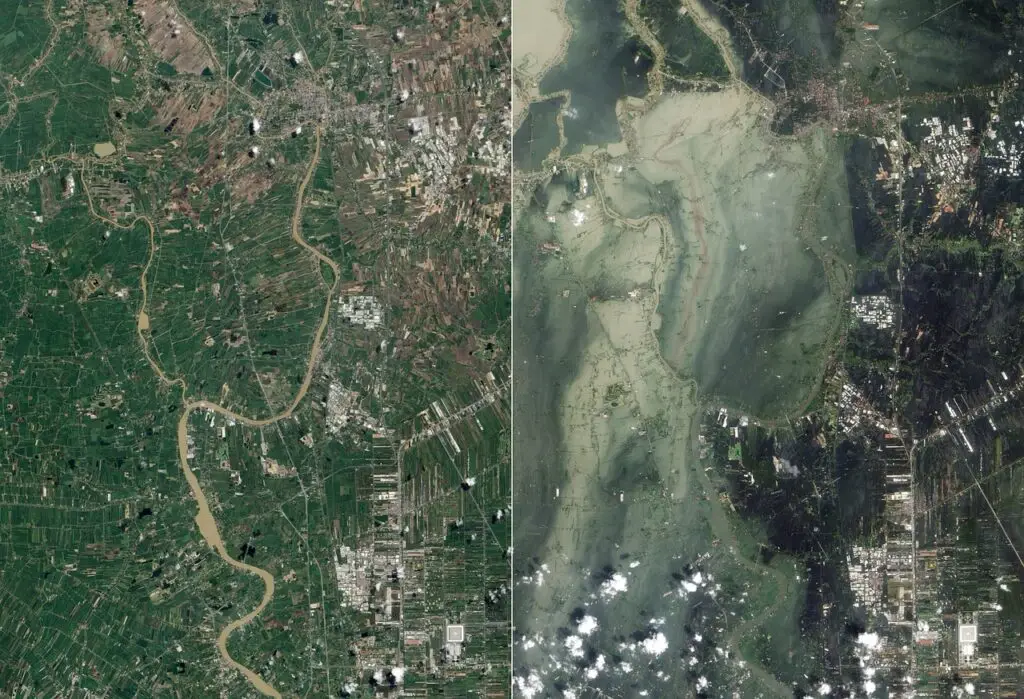
On Thursday, December 5th, 2024, a significant earthquake rattled the coast of Northern California. A powerful 7.0 magnitude earthquake struck off the coast of Northern California, sending shockwaves through the region and prompting a tsunami warning. The quake, centered near Ferndale, caused significant shaking and triggered a series of aftershocks. While the tsunami threat subsided, the earthquake left behind a trail of damage, including power outages and structural damage.
The initial threat of a destructive tsunami receded as the National Tsunami Warning Center lifted the alert at 11:54 a.m. local time. While no significant tsunami waves were observed, authorities cautioned the public against returning to coastal areas until official clearance.
Earthquakes, measured on the Richter scale, can cause varying degrees of damage. While tremors below 2.5 are typically imperceptible, those between 2.5 and 5.4 rarely result in significant damage. Earthquakes ranging from 5.5 to 6.0 can cause slight damage to buildings, while those between 6.1 and 6.9 can lead to serious structural damage. Major earthquakes, measuring between 7.0 and 7.9, can cause widespread destruction, and those exceeding 8.0 can devastate entire communities.
The Epicenter
The epicenter of the earthquake was located about 62 miles west of Ferndale, California. The shallow depth of the quake, around 6 miles below the surface, amplified its impact, leading to strong shaking felt as far south as San Francisco.
The recent earthquake struck in a geologically complex region where three massive tectonic plates converge: the Pacific, North American, and Juan de Fuca plates. This intersection, known as the Mendocino Triple Junction, is a hotspot for seismic activity. The region has a history of powerful earthquakes, including the 6.1 and 6.0 magnitude quakes near Petrolia in 2021 and the 6.4 magnitude earthquake near Ferndale in 2022. This latest seismic event underscores the dynamic nature of this tectonic boundary.
California Tsunami Threat
Following the earthquake, a tsunami warning was issued for the coast of Northern California and Southern Oregon. Coastal residents were urged to evacuate to higher ground as a precautionary measure. However, fortunately, no significant tsunami waves materialized, and the warning was later canceled.
The Aftermath
While the earthquake caused significant shaking and some structural damage, especially in the areas closer to the epicenter, there were no reports of major injuries or fatalities. Power outages affected thousands of residents in Humboldt County, and emergency services were mobilized to assess the situation and provide assistance.
A Seismically Active Region
The region where the earthquake occurred is known for its seismic activity. It’s a complex area where three tectonic plates meet: the Pacific, North American, and Juan de Fuca plates. This geological setting makes the area prone to earthquakes.
Learning from the Event
This earthquake serves as a reminder of the importance of earthquake preparedness. Residents in earthquake-prone areas should be aware of emergency plans, have emergency kits ready, and know how to respond to an earthquake.
- Drop, Cover, and Hold On:
This is the recommended safety procedure during an earthquake. Drop to the ground, take cover under a sturdy object like a table or desk, and hold on until the shaking stops. - Evacuation Plans: Have a plan in place to evacuate your home or workplace in case of an earthquake or other emergency.
- Emergency Kit:
Keep an emergency kit with essential supplies like water, food, a first-aid kit, a flashlight, and a battery-powered radio.
-
United States Geological Survey (USGS):
- Website: USGS Earthquake Hazards Program: https://earthquake.usgs.gov/
- This is the primary source for real-time earthquake information, including maps, data, and news updates.
-
California Geological Survey (CGS):
- Website: California Geological Survey: https://earthquake.ca.gov/
- CGS provides information on California’s earthquake history, fault systems, and preparedness tips.
-
National Oceanic and Atmospheric Administration (NOAA):
- Website: National Oceanic and Atmospheric Administration: https://www.noaa.gov/
- NOAA provides information on tsunamis, coastal hazards, and other natural disasters.
